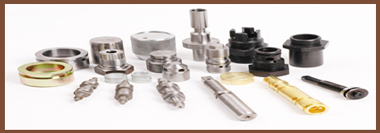Going back to the very first articles of the Original Prop Blog – The Hobby Without a Name & What is “Original”? – there are always words that are frequently used that are problematic. This will be the first in a series of articles which discusses some of these terms in some detail. The term for this article: “Production Made”.
The most important word in the hobby, in my opinion, is “Original”. My personal definition of the word “original” is as follows:
An “original” piece is something:
1) made by or acquired by the production,
2) during the production, and
3) used or intended to be used during the production.
All three of these traits would have to be true to be “original”.
Many other key terms in the hobby relate to this definition. As an example, “screen-match” would be a more detailed subset of “original”, while a replica would be defined as a piece that does not meet one or more of the three criteria listed above.
One term that is used substantially, particularly in “for sale” offerings to the marketplace, is “Production Made”. I believe this is a problematic word in that, on its own, it can be used to imply “original”, or be misinterpreted to mean the same. In fact, a piece can be made by the production, and still not be “original”. In short, the word cannot stand on its own without further clarification, with regards to the authenticity of a piece. “Production Made” and “Original” are not synonymous or interchangeable.
As an example, a prop maker could be employed by a studio to make two prop masks. The prop maker could make two of them, develop some change or improvement, and then make two more and deliver those second two to the production. In my opinion, all four would be “original”, in that they were made by the production, during the production, and were used or intended to be used. The first two might be considered prototypes leading to the development of the second two, which will still fall under the “original” umbrella, as they served the production in the development process. Having said that, as collectible memorabilia, they would need to be appropriately classified as “original prototypes”.
As a second example, let’s say that same prop maker, after making the two prototypes, and then the two final versions and delivering them to the production, he subsequently makes two more of the same mask for himself, as extras. This was not at the request of the production, and they are never delivered to the production or studio. Later, the prop maker gifts or sells them to a collector. Those two pieces would not, in my opinion, be “original”. Since they were never used nor intended to be used during the production, they would be replicas.
However, in all of these cases – the first two prototypes, the second two delivered to and used in the production, and the third two replicas – all six pieces would be “production made”, but only four of the six would be “original”. For more details of how and why this is a problem, see “The Dirty Little Secret of the Hobby“.
I’ve also seen people (mis)use the term “production made” to describe pieces made by principals from the production long after the production period, and even after the film or television program is released/broadcast.
“Production made” is also used to describe crew gifts, which in my estimation are not “original”, in that they are made as gifts, not to be used in the production of a movie or television program.
I am in the process of building some visual charts which better classify the most important terms – “Authentic”, “Inconclusive” and “Inauthentic” – and how other terms and concepts relate and interrelate.
As always, the Original Prop Blog Lexicon is an evolutionary resource available to readers.
Jason DeBord

